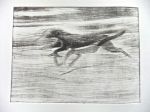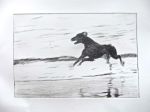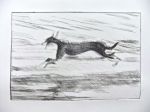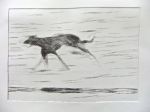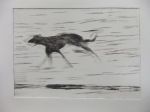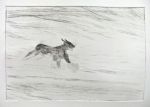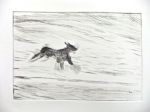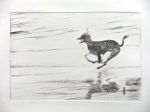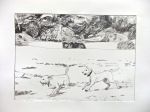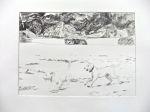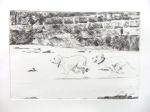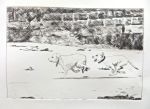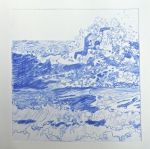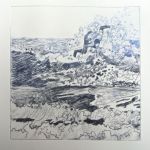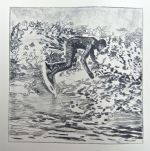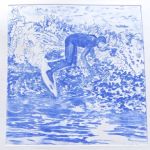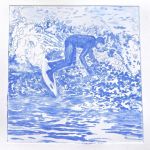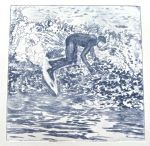-
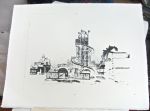
-
Foggy funfair I (‘Spanish City Funfair’) photo-lithograph print.
-
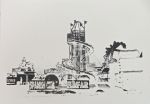
-
Foggy funfair I (‘Spanish City Funfair’) photo-lithograph print.
-
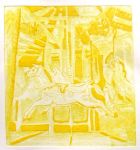
-
Carousel 1
-
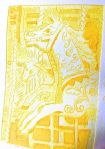
-
First print off the small carousel plate.
-
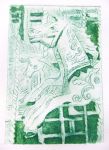
-
Carousel 2 (viridian 1 over yellow)
-
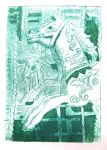
-
Carousel 2 (viridian 2)
-
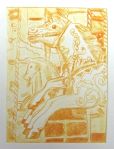
-
Carousel 3.1
-
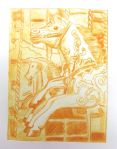
-
Carousel 3.2
-
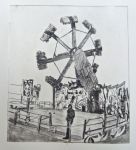
-
‘Extreme Energy’ 1.2
-
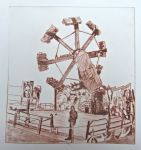
-
‘Extreme Energy’ 1.3
-
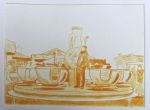
-
Teacups ride 1-1
-
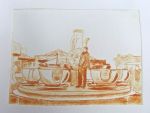
-
Teacups ride 1-2
-
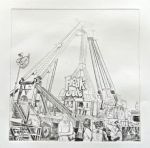
-
Fairground ride – ‘Freak Out,’ Artist’s Proof, October 2014.
-
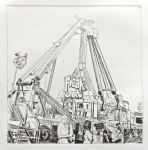
-
Fairground ride – ‘Freak Out,’ Artist’s Proof, October 2014.
I had not intended to make a fairground series when I was starting to get into printing properly. I had taken some photos of fairground rides a few years ago and had hoped at some point to use them as a starting point for paintings. When I did the photo-lithography course, we had been told to bring some photos with us, and one of mine was of a carousel, but with advice from the tutor, Marcia, I decided to use the scaffolded viaduct instead.
The fairground remained in my mind, however, and I found a view that included a helter-skelter for the next photo-lithograph. Then I got into drypoint and returned to the carousel image. Having done two fairground rides, I had to try others.
Why fairgrounds?
I don’t visit fairgrounds often and have had good and bad experiences in them. The carousels attract me. I remember them from childhood, and an experience in my early 20s, wandering through London one November or December evening and coming across a carousel in a square, enticing with its music, bright colours and evocations of childhood memories. I watched, nibbling at hot roast chestnuts from a nearby stall, trying to fix in my mind the image of the golden light and horses whirling around in the hope that I could make a picture of it some day.
Fairgrounds are strange places, areas where the customs and rules differ. They create a fantasy and excitement with colour, movement, noise and bright lights. They offer fear in a relatively safe environment. There is an air of danger about them, not caused just by the stomach-churning rides.
I started out trying to overcome the memory of a bad experience in a fairground. I was surprised to find that rather than producing all dark and moody images, I soon added in a bright yellow carousel. There could yet be dark and moody carousels to create, but the yellow one representing one of my earliest memories of being on one with my gran, in brilliant sunshine, was the one that emerged first.
Currently, my fairground images focus on the rides, not the people looking after the rides nor those experiencing them. The mechanical engineering interests me. I particularly enjoy seeing and hearing steam-driven fairground rides. Would people be as keen to ride on the machines if they were stripped back to the functional elements, lost their lights and bright paint and dressing up as aeroplanes or teacups or trains?
As an art historian, I am interested in the imagery of fairgrounds (much of which tends to be American), including the iconography decorating the rides. The last temporary fair I saw made me wonder if most of the decoration is designed by men due to the prevalence of cowboys, men with fast cars, and scantily-clad young women.
I vaguely recall young men who supervised the rides and took the money as lithe with hard muscles (gained through daily physical work rather than a workout at the gym), stepping as fluidly as a cat around the moving ride, chatting up young women whilst chain-smoking and eyes continuously flickering over the crowd passing by.
There is a sense that behaviour considered transgressive in everyday life would be acceptable within the walls of the fairground, especially when it is a travelling fair. You can shout and scream and throw up without people regarding such behaviour as strange. You could eat hot dogs and burgers and candyfloss without everyone observing considering you a junk food addict.
The photos on which I’m basing most of this series of prints were taken on a couple of visits to a temporary fair near Spanish City in Whitley Bay which used to have a permanent funfair, mentioned in a 1980 Dire Straits song ‘Tunnel of Love.’
Tuesday 28th October – Freak Out
I printed ‘Freak Out’ for the first time last Thursday (added the the images above). I’m not entirely sure it works. I might print more from the plate and then try adding watercolour or acrylic paint to some.
